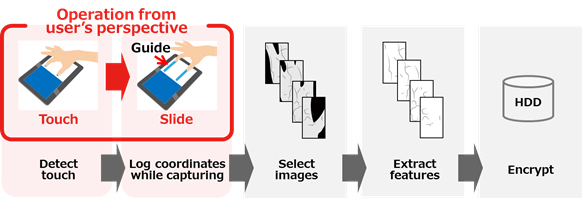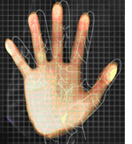Palm vein biometrics miniaturized for mobile authentication
10 January, 2017
category: Biometrics, Corporate, Digital ID, Government
As biometric modalities wrestle for space in mobile devices, Fujitsu Laboratories is offering up a new entrant in its palm vein technology. Because of the relatively large size of the body part being measured – the human palm – compared to fingerprint or iris, palm vein biometrics has traditionally required larger sensors, and thus seemed beyond the realm of handset or tablet inclusion. But miniaturization is changing all that.
Fujitsu reduced the size of its optical scanner to just 8 millimeters so it can fit in the tight confines of a mobile device. But how can you capture a palm in just 8 mm? The key is applying the slide-style presentment used by other technologies such as fingerprint slide readers, to capture a large area in a series of smaller image slices. Software then pieces these slices together to create the full picture of the palm for template creation.
Palm vein images are captured by illuminating the palm with near-infrared light, which can pass easily through skin and human tissue to see the unique vein patterns. An optical scanner requires both a light source and a camera, but to uniformly illuminate the entire palm, the light source has traditionally been too large to fit in a mobile device. Fujitsu, however, created a compact version that lights up a rectangular target area with uniform intensity via a single LED. Using diffraction, the illuminated palm area can be significantly larger than the light source itself making rapid imaging possible.
Building the palm vein scanner into the touch panel of a handset or tablet enables secure biometric presentment on the device. Authentication requires the user to simply slide fingers across the touch panel which properly positions the palm for imaging.
As the diagram shows, the user moves fingers along the visually specified path to ensure the palm passes over the scanner in the correct alignment, allowing the software to position the image slices for processing.
The company cites palm vein authentication as superior to other modalities because the biological information being measured is within the body and thus more difficult to spoof.
Fujitsu’s goal is to refine both the optical unit and authentication algorithm to reach “practical implementation” of slide-style palm vein authentication technology during fiscal 2017.




